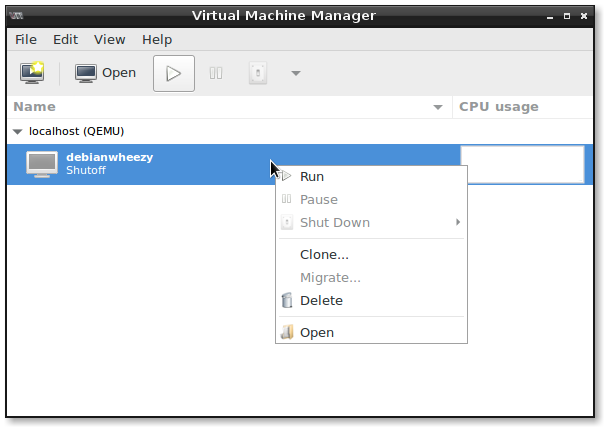

Both the snapshot & delta since the snapshot are Internal disk snapshot: The state of the virtual disk at a given

# qemu-img info /export/vmimages/Fedora-guest-with-updates-1A.qcow2 Information about a disk image, like virtual size, disk size, backing file(if itĮxists) can be obtained by using 'qemu-img' as below: export/vmimages/Fedora-guest-with-updates-1A.qcow2 # qemu-img create -b /export/vmimages/Fed-w-updates.qcow2 -f qcow2 \ This overly would point to 'Fed-w-updates.qcow2' as its backing file (which This can beĪccomplished by creating another overlay(Fedora-guest-with-updates-1A) - but
#QEMU SNAPSHOT FULL#
Continuting with our example, say, now you want to instantiate aįedora-17 guest, but this time, with full Fedora updates. Now, both the above images Fedora-guest-1 & Fedora-guest-2 are ready toīoot. # qemu-img create -b /export/vmimages/RootBase.img -f qcow2 \ To create two thinly-provisioned Fedora clones(or overlays) using a singleīacking file, we can invoke qemu-img as below: To create multiple overlays - which can subsequently have their own overlays. Also, the example & Figure-2Ībove illustrate that a single root-base image(FedoraBase.img) can be used QCOW2 overlay files pointing to our backing file. Read-only 'template' to quickly instantiate two(or more) thinly provisionedįedora-17 guests(say Fedora-guest-1.qcow2, Fedora-guest-2.qcow2) by creating In the above example, say, FedoraBase.img has a freshly installed Fedora-17 OS on it,Īnd let's establish it as our backing file. (Arrow to be read as Fed-w-updates.qcow2 has Fedora-guest-1.qcow2 as its backing file.) Referīelow ('blockcommit' section) for relevant info on this. Overlay depends on a particular state of the backing file). In other words, once an overlay is created, its backing file should not be modified(as the NOTE: Backing files are always opened read-only. 'single' backing file, and create several overlays - which can be used further, The above figure is just another representation which indicates, we can use a | RootBase |<- Overlay-1 |<- Overlay-1A <- Overlay-1B <- Overlay-1C | In turn is backing file for Overlay-2, which in turn is backing file for The above figure illustrates - RootBase is the backing file for Overlay-1, which So that one could quickly revert to a known state & discard the overlay. Especially quite useful in development & test environments, Backing files and overlays areĮxtremely useful to rapidly instantiate thin-privisoned virtual machines(more on In essence, QCOW2(Qemu Copy-On-Write) gives you an ability to create a base-image,Īnd create several 'disposable' copy-on-write overlay disk images on top of theīase image(also called backing file).


 0 kommentar(er)
0 kommentar(er)
